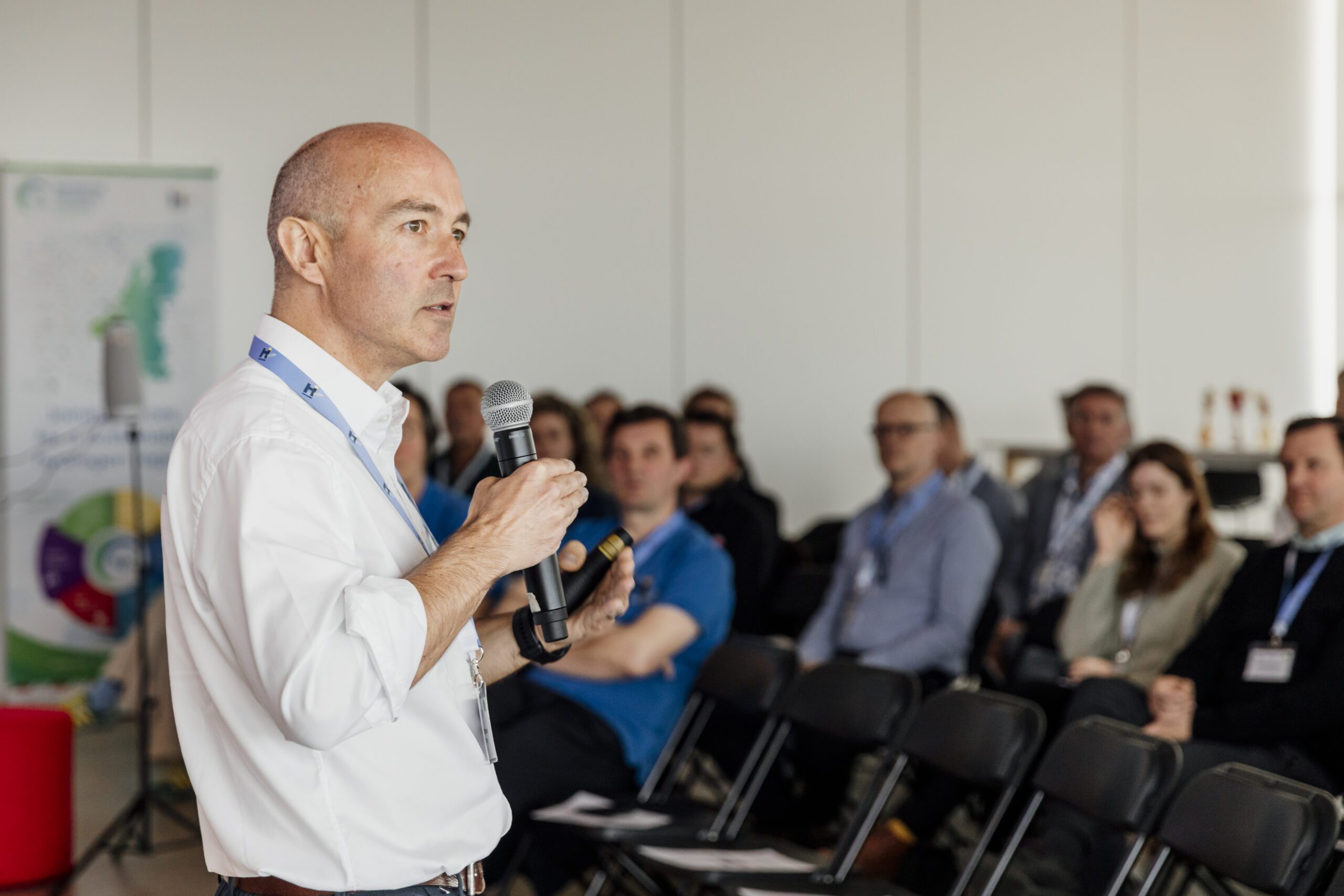Double materiality assessment

Methodology
ESRS2 IRO-1, DP 53a
The methodology used for conducting the Double Materiality Assessment under the Corporate Sustainability Reporting Directive (CSRD) involves a structured and iterative process.
The primary assumptions are that all relevant sustainability matters identified can impact Cordeel’s operational and financial performance, and that stakeholder feedback is crucial for assessing the significance of these impacts.
The methodology includes extensive consultations with stakeholders who are directly or indirectly affected by Cordeel’s operations. This includes engaging with employees, customers, suppliers, and/or their representatives directly or indirectly through surveys and interviews to gather diverse perspectives on the impact of the company’s activities. We used the feedback of our extensive survey we conducted in 2023 as a baseline.
In 2024, we focused on consulting external sources to ensure that the assessments are aligned with industry standards and best practices. More importantly, we wanted to make sure that we evaluate our real impact and that take into account diverse perspectives.
We matched the external information like ENCORE with the KPI’s we have been collecting since several years to come to a conclusion on what’s material to us.
We started by mapping out all the ESRS sustainability (sub) topics as well as the results from our previous assessment, topics used by other companies in our sector and entity-specific matters. After a first evaluation on which topics are not applicable at all for us (e.g. “adequate food for affected communities”) we created a long list of 63 matters. Here, we conducted further research to evaluate impact, risks and opportunities. Finally, we ended with a short list of 20 sustainability matters.
We decided to evaluate E1 – Climate Change, G1 – Business Conduct and S1 – Own Workforce not on a subtopic level, but as a whole. Given our size and impact it was likely that we would need to report on all the various subtopics anyway.
The resulting double materiality assessment was validated by our Board of Directors.
We tried to follow the CSRD guidelines for double materiality analysis as closely as possible. We will continue to have yearly updates on this analysis.
Process to identify, assess, prioritise and monitor potential and actual impacts on people and environment
Per sustainability matter we defined possible and/ or actual impacts. To evaluate the impact, we utilized a vast amount of external resources such as ENCORE, publications of Embuild, Circular Frlanders, the World Economic Forum Risk and an overview of High Water Risk Areas.
Additionally, we interviewed eight internal stakeholders on very specific topics where they are experts. E.g. one QHSE coordinator on substances of concern, our Group Legal Council on Business Conduct and Workers in the value chain.
We assess the significance of environmental and social impacts using a set of dimensions: Scale, Scope, Irremediability, and Likelihood. These are scored from Minimal (1), informative, important (3), high, very high (5), where “important” is our materiality threshold.
Scoring Criteria:
| Dimension | Description | Scale |
| Scale | How serious or beneficial is the impact? | 1–5 |
| Scope | How widespread is the impact? | 1–5 |
| Irremediability | To what extent can the environment or people recover from the impact? | 1–5 |
| Likelihood | How likely is the impact to occur? (Only for potential impacts) | 1–5 |
ESRS 2 IRO-1, DP 53b, 53b i

Description of process used to identify, assess, prioritise and monitor risks and opportunities that have or may have financial effects
To evaluate the financial relevance of sustainability topics, we assess both the magnitude and likelihood of their financial effects on the Cordeel Group.
We use consolidated revenue as the reference point. While this doesn’t fully reflect the vertical integration of our production companies or intercompany revenue, we apply professional judgement to ensure smaller entities with large societal or environmental impact are not undervalued.
We results stem from qualitative interviews with the Cordeel Group CFO, the CFO of Cordeel Nederland as well as experts from four financial partners.
| Dimension | Description | Scale |
| Magnitude | How much of total consolidated revenue could be affected? | 1–5 |
| Likelihood | How likely is the impact to occur? | 1–5 |
Magnitude:
| Score | % of Consolidated Revenue | Description |
| 1 | 0 – 0.25% | Very low |
| 2 | 0.25 – 0.5% | Low |
| 3 | 0.5 – 10% | Medium |
| 4 | 10 – 40% | High |
| 5 | > 40% | Very high |
| Formula | Magnitude + Likelihood |
| Materiality Threshold | ≥ 6 = Considered material |
ESRS2 IRO-1, 53c, 53c ii

What is material to Cordeel
| ESRS | Sustainability matter | Positive/ negative | Actual/ potential | Impact material | Financial material |
|---|---|---|---|---|---|
| S1 | Own Workforce | Negative | Potential | Yes | Yes |
| G1 | Business Conduct | Negative | Potential | Yes | Yes |
| E1 | Climate Change | Negative | Actual | Yes | Yes |
| Entity specific (E1) | Embodied carbon of buildings | Negative | Actual | Yes | Yes |
| E5 | Resource inflows & use | Negative | Actual | Yes | Yes |
| E5 | Waste | Negative | Actual | Yes | Yes |
| Entity specific (E5) | Circular design practices | Positive | Potential | Yes | Yes |
| E4 | Biodiversity, land-use | Negative | Actual | Yes | Yes |
| Entity specific | Innovation | Positive | Potential | Yes | Yes |
| S2 | Health & Safety of value chain | Negative | Potential | Yes | No |
| E5 | Resource outflows | Negative | Potential | No | No |
| S2 | Forced labour | Negative | Potential | No | No |
| S2 | Adequate wages | Negative | Potential | No | No |
| E3 | Water withdrawals | Negative | Potential | No | No |
| E2 | Pollution of soils | Negative | Potential | No | No |
| S2 | Adequate housing | Negative | Potential | No | No |
| E2 | Noise pollution | Negative | Actual | No | No |
| E3 | Water discharges | Negative | Potential | No | No |
| E2 | Pollution of air | Negative | Actual | No | No |
| E3 | Water consumption | Negative | Actial | No | No |
Double materiality matrix
Sustainability matters with big bullet size are double material to use.
-
1Embodied carbon
-
2Circular Design
-
3Innovation
-
4Biodiversity
-
5Climate Change
-
6Resource inflows
-
7Waste
-
8Resource outflows
-
9Water withdrawals
-
10Water discharges
-
11Water consumption
-
12Pollution of soil
-
13Noise pollution
-
14Pollution of air
-
15Own workforce
-
16Business conduct
-
17Health & Safety (Value Chain)
-
18Forced Labour (Value Chain)
-
19Aqequate wages (Value Chain)
-
20Adequate housing (Value Chain)